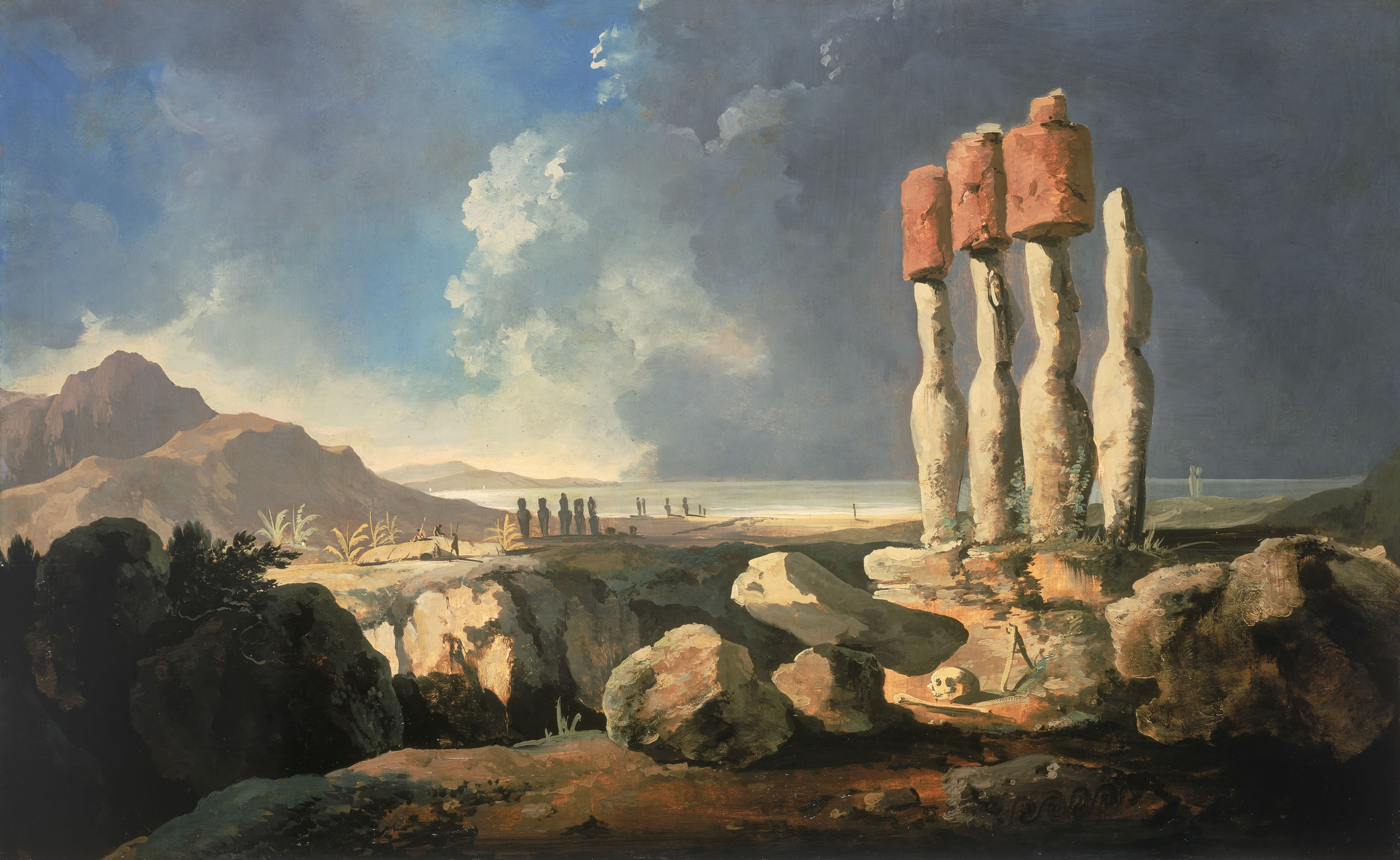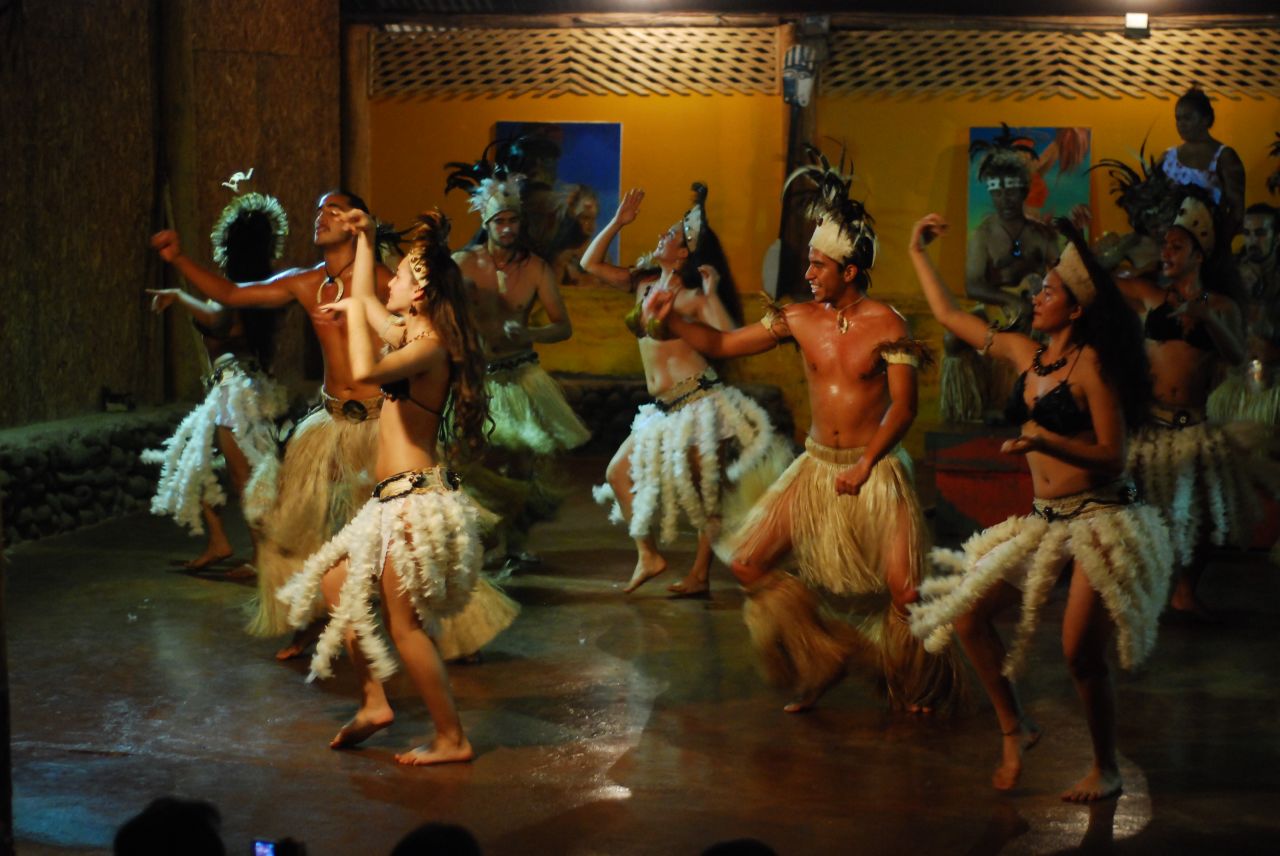|
Music Of Easter Island
Easter Island, a Polynesian island that is part of Chile, has a unique regional musical history. History Pu o Hiro The Rapa Nui used an ancient stone aerophone called the Pu o Hiro (Trumpet of Hiro) for fertility rituals and to call the Polynesian god of rain Hiro. By blowing through the main hole it emits a deep Trumpet sound. During droughts, the Ariki Paka (nobles) would dress in ceremonial clothing and pray for rainfall. They chanted the following song: Music school The first music school on the Easter Island Easter Island (, ; , ) is an island and special territory of Chile in the southeastern Pacific Ocean, at the southeasternmost point of the Polynesian Triangle in Oceania. The island is renowned for its nearly 1,000 extant monumental statues, ... was opened in 2012 by Mahani Teave, and teaches piano, cello, ukulele, and violin. See also * * References External links EASTER ISLAND MUSICEaster IslandReal Audio sample of Easter Island musico {{DEFA ... [...More Info...] [...Related Items...] OR: [Wikipedia] [Google] [Baidu] |
Easter Island
Easter Island (, ; , ) is an island and special territory of Chile in the southeastern Pacific Ocean, at the southeasternmost point of the Polynesian Triangle in Oceania. The island is renowned for its nearly 1,000 extant monumental statues, called ''moai'', which were created by the early Rapa Nui people. In 1995, UNESCO named Easter Island a World Heritage Site, with much of the island protected within Rapa Nui National Park. Experts differ on when the island's Polynesian inhabitants first reached the island. While many in the research community cited evidence that they arrived around the year 800, a 2007 study provided compelling evidence suggesting their arrival was closer to 1200. The inhabitants created a thriving and industrious culture, as evidenced by the island's numerous enormous stone ''moai'' and other artifacts. Land clearing for cultivation and the introduction of the Polynesian rat led to gradual deforestation. By the time of European arrival in 1722, the i ... [...More Info...] [...Related Items...] OR: [Wikipedia] [Google] [Baidu] |
Chile
Chile, officially the Republic of Chile, is a country in western South America. It is the southernmost country in the world and the closest to Antarctica, stretching along a narrow strip of land between the Andes, Andes Mountains and the Pacific Ocean. Chile had a population of 17.5 million as of the latest census in 2017 and has a territorial area of , sharing borders with Peru to the north, Bolivia to the northeast, Argentina to the east, and the Drake Passage to the south. The country also controls several Pacific islands, including Juan Fernández Islands, Juan Fernández, Isla Salas y Gómez, Desventuradas Islands, Desventuradas, and Easter Island, and claims about of Antarctica as the Chilean Antarctic Territory. The capital and largest city of Chile is Santiago, and the national language is Spanish language, Spanish. Conquest of Chile, Spain conquered and colonized the region in the mid-16th century, replacing Incas in Central Chile, Inca rule; however, they Arauco War ... [...More Info...] [...Related Items...] OR: [Wikipedia] [Google] [Baidu] |
Rapa Nui People
The Rapa Nui (Rapa Nui: , Spanish: ) are the Indigenous Polynesian peoples of Easter Island. The easternmost Polynesian culture, the descendants of the original people of Easter Island make up about 60% of the current Easter Island population and have a significant portion of their population residing in mainland Chile. They speak both the traditional Rapa Nui language and the primary language of Chile, Spanish. At the 2017 census there were 7,750 island inhabitants—almost all living in the village of Hanga Roa on the sheltered west coast. As of 2011, Rapa Nui's main source of income derived from tourism, which focuses on the giant sculptures called moai. Over the past decade, Rapa Nui activists have been fighting for self-determination and sovereignty over their lands. Protests in 2010 and 2011 by the Indigenous Rapa Nui on Easter Island, objecting to the creation of a marine park and reserve, have led to clashes with Chilean police. History Pre-European contact (300 ... [...More Info...] [...Related Items...] OR: [Wikipedia] [Google] [Baidu] |
Aerophone
An aerophone is a musical instrument that produces sound primarily by causing a body of air to vibrate, without the use of strings or membranes (which are respectively chordophones and membranophones), and without the vibration of the instrument itself adding considerably to the sound (or idiophones). According to Curt Sachs: These may be lips, a mechanical reed, or a sharp edge. Also, an aerophone may be excited by percussive acts, such as the slapping of the keys of a flute or of any other woodwind. A free aerophone lacks the enclosed column of air yet, "cause a series of condensations and rarefications by various means." Overview Aerophones are one of the four main classes of instruments in the original Hornbostel–Sachs system of musical instrument classification, which further classifies aerophones by whether or not the vibrating air is contained within the instrument. The first class (41) includes instruments which, when played, do ''not'' contain the vibrating air. ... [...More Info...] [...Related Items...] OR: [Wikipedia] [Google] [Baidu] |
Pu O Hiro
Pu o Hiro (which means Hiro's Trumpet) is a stone on Easter Island that was used as a musical instrument by the ancient Rapa Nui. It is also known as Maea Puhi ("stone to blow" or "wind stone"). When blown through its main hole, it would produce a sound that resembled a trumpet. It was used to invoke Hiro, the deity of rain. Description Pu o Hiro is approximately 1 to 1.25 meters tall. It is a stone aerophone. It is an ovoid rock with multiple natural holes. There is one main hole that was used to blow and three outlet holes. The main hole is natural and located at the top of the stone. The stone has multiple petroglyphs. Some include vulva forms known as ''komari'', a symbol of fertility. Uses Pu o Hiro had multiple uses, although it is not clearly defined. It had been used to invoke Hiro, the rain deity. It was also used to summon a gathering of neighbors. It also could have warned of a potential enemy attack. It may also have been fishing talisman, used to make sounds th ... [...More Info...] [...Related Items...] OR: [Wikipedia] [Google] [Baidu] |
Mahani Teave
Mahani Teave (born 14 February 1983) is a classical pianist from Easter Island, Chile. Background Teave was born on Hawaii, to a Rapa Nui father and an American mother. She attended the Austral University and studied music at the Cleveland Institute of Music and Hanns Eisler Music Academy (where she received the Konrad Adenauer Fellowship). Music Teave is considered Easter Island's only professional classical musician. She began playing Western classical music as a child, and, after her teacher left the island, Teave's family moved to mainland Chile so she could continue her musical education. Teave has toured globally, including performances throughout Chile, Europe, and Asia. Her first performance in Canada was in 2014 at the Carleton University symposium celebrating Franz Liszt. In 2012, Teave founded the Easter Island Music School, the island's first music school, teaching piano, cello, ukulele, and violin. She and her husband, Enrique Icka, manage the NGO Toki Rap ... [...More Info...] [...Related Items...] OR: [Wikipedia] [Google] [Baidu] |
Huffington Post
''HuffPost'' (''The Huffington Post'' until 2017, itself often abbreviated as ''HPo'') is an American progressive news website, with localized and international editions. The site offers news, satire, blogs, and original content, and covers politics, business, entertainment, environment, technology, popular media, lifestyle, culture, comedy, healthy eating, young women's interests, and local news featuring columnists. It was created to provide a progressive alternative to conservative news websites such as the Drudge Report. The site contains its own content and user-generated content via video blogging, audio, and photo. In 2012, the website became the first commercially run United States digital media enterprise to win a Pulitzer Prize. Founded by Arianna Huffington, Andrew Breitbart, Kenneth Lerer, and Jonah Peretti, the site was launched on May 9, 2005, as a counterpart to the Drudge Report. In March 2011, it was acquired by AOL for US$315 million, with Arian ... [...More Info...] [...Related Items...] OR: [Wikipedia] [Google] [Baidu] |
Music Of Chile
Chilean music refers to all kinds of music developed in Chile, or by Chileans in other countries, from the arrival of the Spanish conquistadors to the modern day. It also includes the native pre-Columbian music from what is today Chilean territory. Music in Chile Pre-Columbian and colonial times Prior to the arrival of the European conquerors, the modern national borders that make up the Americas did not exist, so one cannot refer to music from "Chile", or any other South American country, from this time. However, music existed in the Americas for centuries before European conquest, and many of the characteristics and instruments of pre-Hispanic music have formed part of the folkloric and musical tradition of Chile and of Latin America. Archaeological excavations have unearthed many musical instruments showing the existence of a variety of musical cultures in the area long before even the Inca period. Scientific research into remains left by the Nazca and Mochica peoples ha ... [...More Info...] [...Related Items...] OR: [Wikipedia] [Google] [Baidu] |


